Iron tsuba of round form with dam-shaped rim (dote-mimi) pierced with hitsu-ana and two udenuki-ana (probably cut later on) decorated in flat inlay (hira-zōgan) with vines and symbols of thunder or lightning (possibly - family crest, mon). Hitsu-ana and nakago-ana with copper sekigane.
Ōnin or Heianjō school, or, possibly Kaga or Umetada school. Momoyama period or earlier (Muromachi), 16th century. Unsigned.Size: 64.5 x 63.8 x 2.2 (center), 4.2 (rim) mm.
Provenance: Lundgren Collection: [Japanese sword-fittings and metalwork in the Lundgren Collection. Published by Otsuka Kogeisha Co., Ltd., Tokyo 1992], №31; The Lundgren Collection of Japanese Swords, Sword Fittings and A Group of Miochin School Metalwork. Christie's Auction: Tuesday, 18 November 1997, London. Sales "GOTO-5881". Christie's, 1997, №2. Lundgren's description at Christie's: Heianjo tsuba. Unsigned. The circular plate decorated in brass hirazogan with flowers, plants and symbols of thunder, dote mimi and udenuki ana, late Muromachi period (16th century). Tokyo 1992 description: Sword guard with design of flowering plants and frets in inlay. Unsigned. Heianjo inlay school. 6.35 x 6.3 cm, thickness of rim 0.40 cm. Iron. Flat brass inlay. Muromachi-Momoyama Period, 16th century. Provenance: The Second John Harding. A somewhat look-a-like pieces can be found in various catalogues. The one in Naunton Collection, №172, is signed: Umetada of Yamashiro: "Iron, small, almost circular, with raised oval rim, inlaid all over with leaves and scrolls in brass hirazōgan."



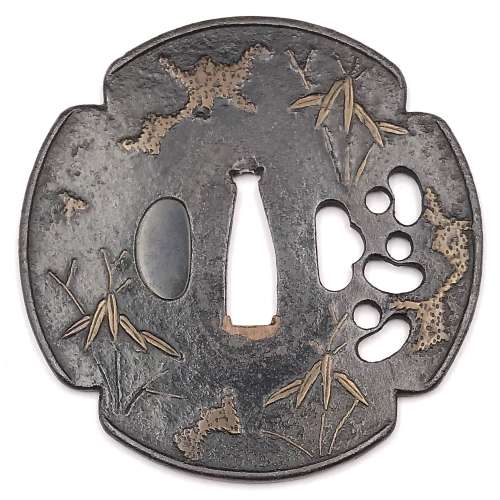







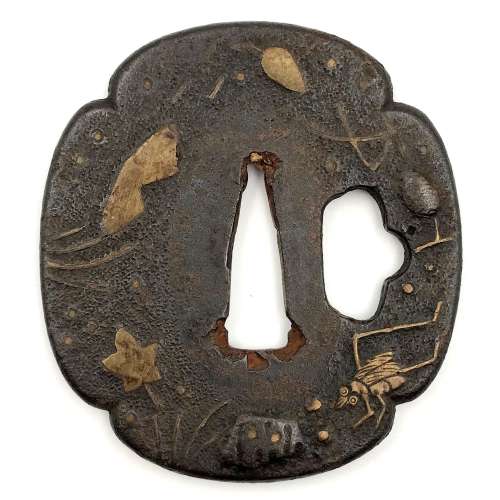
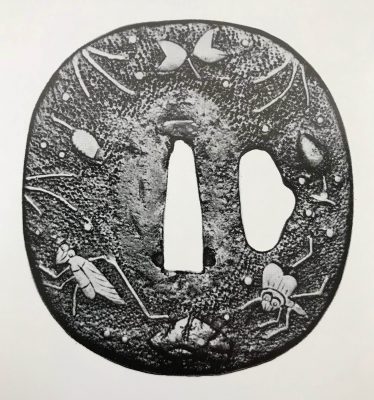
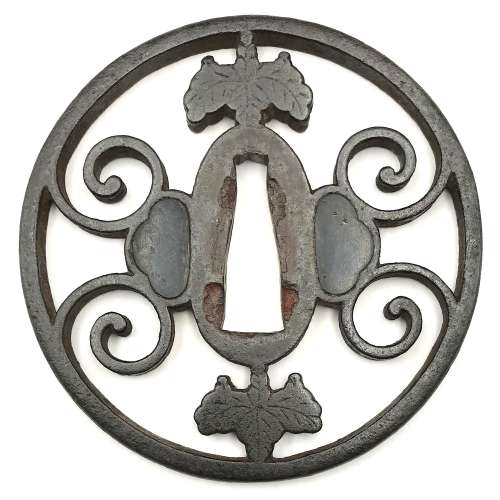
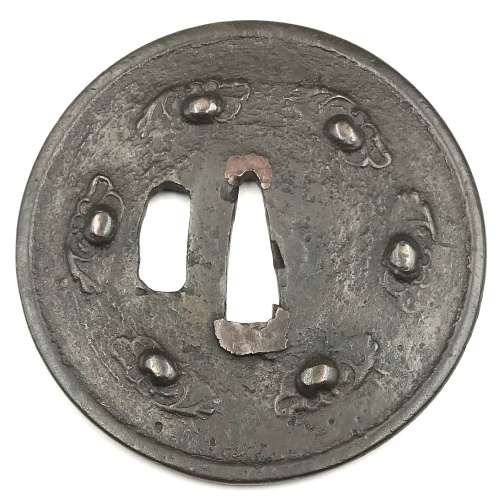
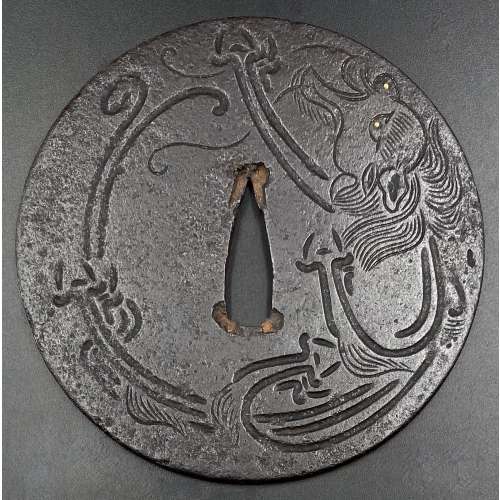

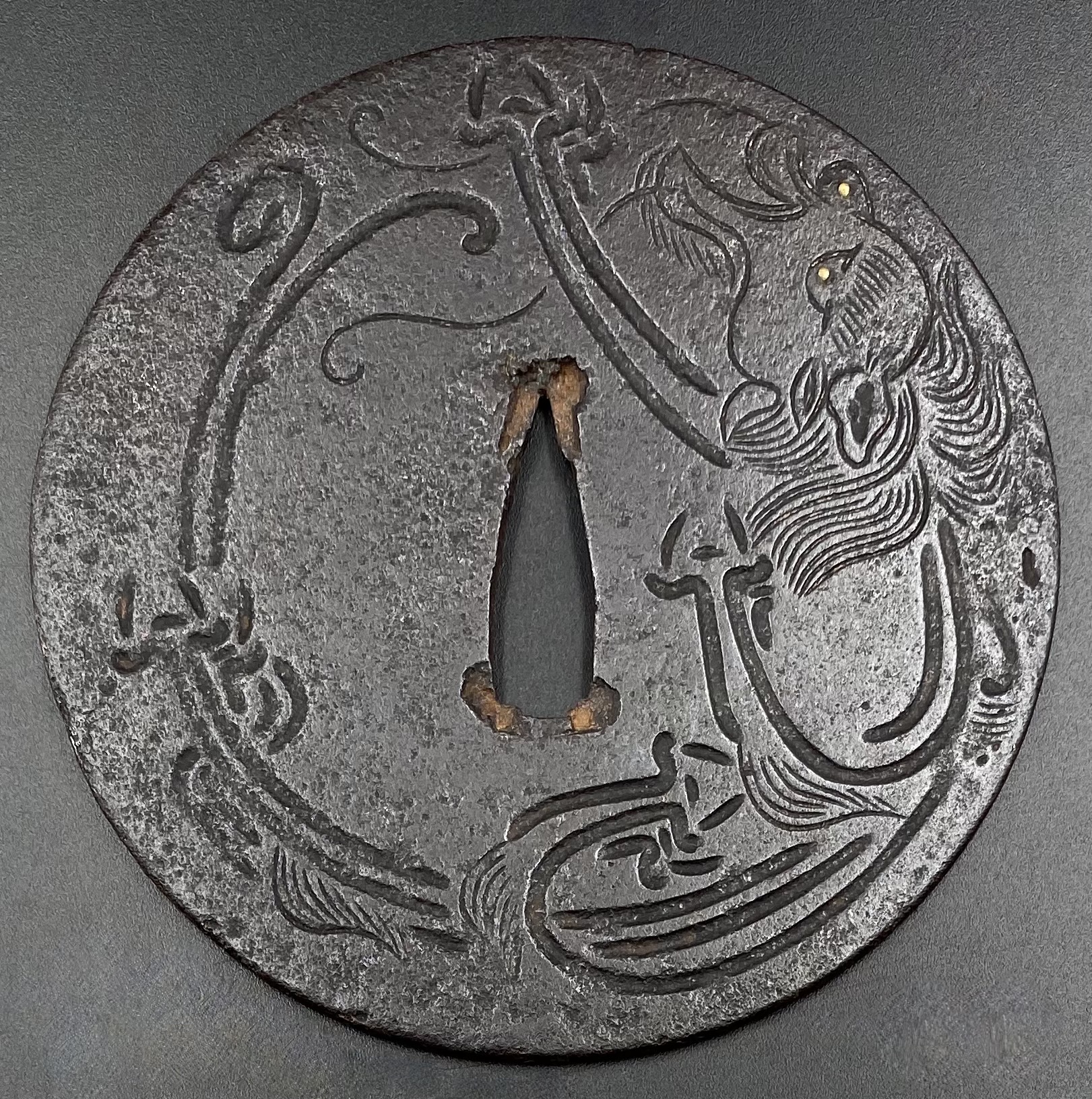 Two other examples of the same design may be found at: (1) Christie, Manson & Woods auction sales “Kotetsu”, 1980, page 12, №10 and (2) Professor A. Z. Freeman and the Phyllis Sharpe Memorial collections №36, pp. 18-19. Both have raised mimi, the latter classified as Katchushi tsuba.
More about
Two other examples of the same design may be found at: (1) Christie, Manson & Woods auction sales “Kotetsu”, 1980, page 12, №10 and (2) Professor A. Z. Freeman and the Phyllis Sharpe Memorial collections №36, pp. 18-19. Both have raised mimi, the latter classified as Katchushi tsuba.
More about 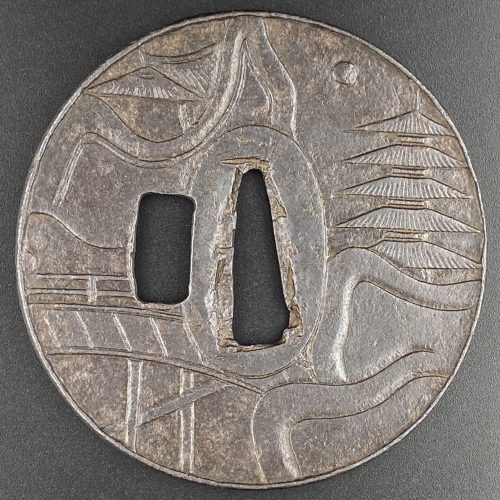



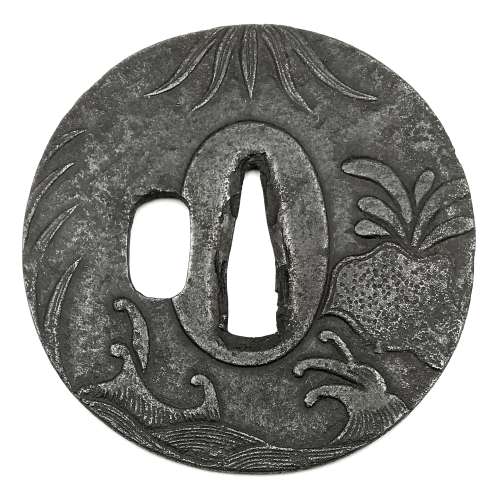



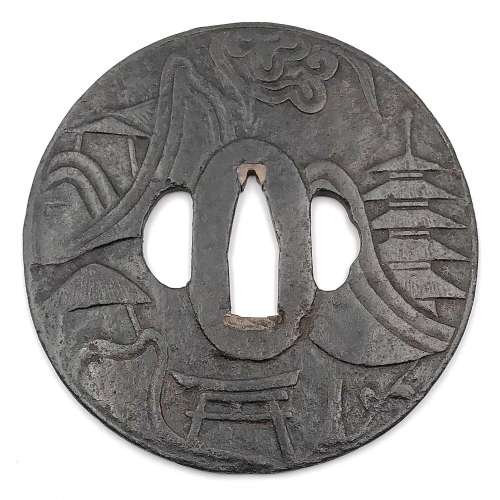
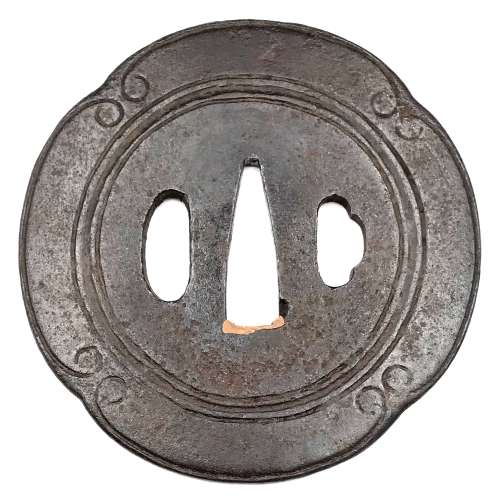
 The description goes: “A kamakurabori type tsuba, Muromachi period, circa 1400. The thin, six-lobed iron plate is carved on each side with a wide groove that follows the shape of the rim, and with six scroll lines and a single thin circular groove. […] The hitsu-ana was added at a later date, circa 1500-1550. Height 8.3 cm, width 8.6 cm, thickness 2.5 mm. The tsuba was initially intended to be mounted on a tachi of the battle type in use from Nambokucho to early Muromachi period (1333-1400)”. Sold at $935.
And another one in Robert E. Haynes Catalog #9 on page 24-25 under №23:
The description goes: “A kamakurabori type tsuba, Muromachi period, circa 1400. The thin, six-lobed iron plate is carved on each side with a wide groove that follows the shape of the rim, and with six scroll lines and a single thin circular groove. […] The hitsu-ana was added at a later date, circa 1500-1550. Height 8.3 cm, width 8.6 cm, thickness 2.5 mm. The tsuba was initially intended to be mounted on a tachi of the battle type in use from Nambokucho to early Muromachi period (1333-1400)”. Sold at $935.
And another one in Robert E. Haynes Catalog #9 on page 24-25 under №23:
 R.E. Haynes description: “Typical later Kamakura-bori style work. This type of plate and carving show the uniform work produced by several schools in the Muromachi period. Some had brass inlay and others were just carved as this one is. The hitsu are later. Ca. 1550. Ht. 8.8 cm, Th. 3.25 mm”. Sold for $175.
R.E. Haynes description: “Typical later Kamakura-bori style work. This type of plate and carving show the uniform work produced by several schools in the Muromachi period. Some had brass inlay and others were just carved as this one is. The hitsu are later. Ca. 1550. Ht. 8.8 cm, Th. 3.25 mm”. Sold for $175.